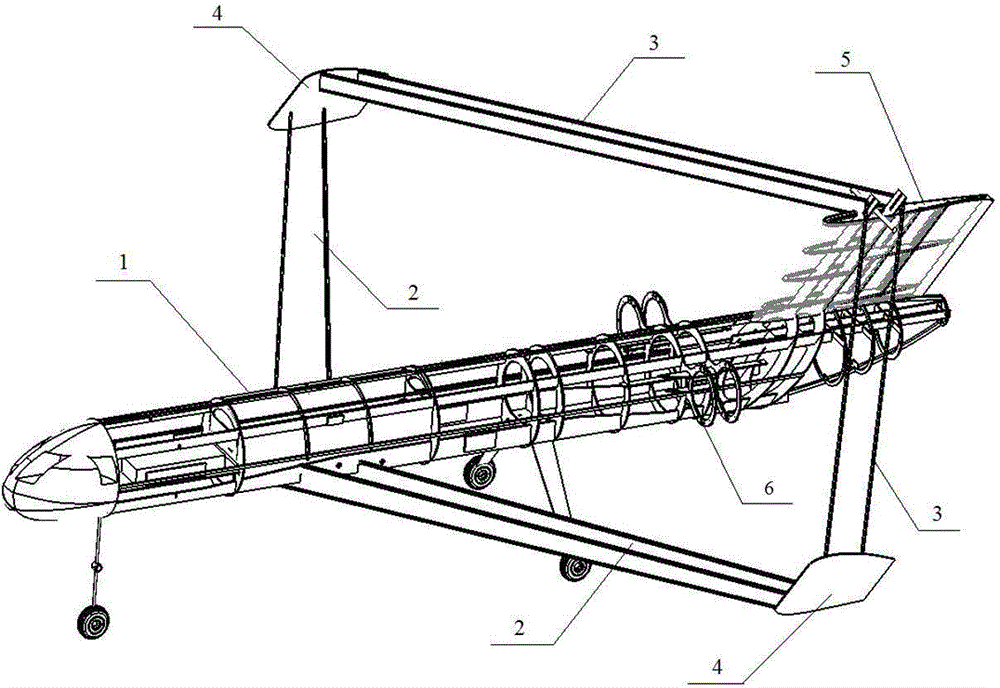Passenger plane with joined-wing configuration
A technology of connecting wings and configurations, applied in the directions of fuselage, wings, aircraft parts, etc., can solve the problems of limited aspect ratio, poor structural characteristics, and high critical Mach number, and achieve the effect of reducing external dimensions and reducing induced resistance.
- Summary
- Abstract
- Description
- Claims
- Application Information
AI Technical Summary
Problems solved by technology
Method used
Image
Examples
Embodiment Construction
[0032] Below in conjunction with accompanying drawing, technical scheme of the present invention is described in further detail:
[0033] The invention discloses a passenger plane with connected wings, which changes the typical configuration of the traditional passenger plane "fuselage-wing-horizontal tail-vertical tail" into a new structure of "fuselage-front wing-rear wing-vertical tail". Type, the wing roots of the front wing and the rear wing are connected to the front fuselage and the rear fuselage respectively, and the wing tips of the front wing and the rear wing are respectively connected to the lower end and upper end of the end plate, forming a "connected wing" in which the front and rear wings are connected together. "structure.
[0034] Such as figure 1 As shown, the present invention includes fuselage, front wing, rear wing, vertical tail, end plate, and engine. The total 6 parts, wherein, the root of the front wing is connected with the fuselage through the No. ...
PUM
 Login to View More
Login to View More Abstract
Description
Claims
Application Information
 Login to View More
Login to View More - R&D
- Intellectual Property
- Life Sciences
- Materials
- Tech Scout
- Unparalleled Data Quality
- Higher Quality Content
- 60% Fewer Hallucinations
Browse by: Latest US Patents, China's latest patents, Technical Efficacy Thesaurus, Application Domain, Technology Topic, Popular Technical Reports.
© 2025 PatSnap. All rights reserved.Legal|Privacy policy|Modern Slavery Act Transparency Statement|Sitemap|About US| Contact US: help@patsnap.com


